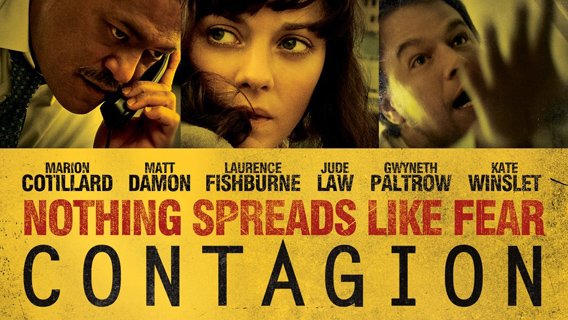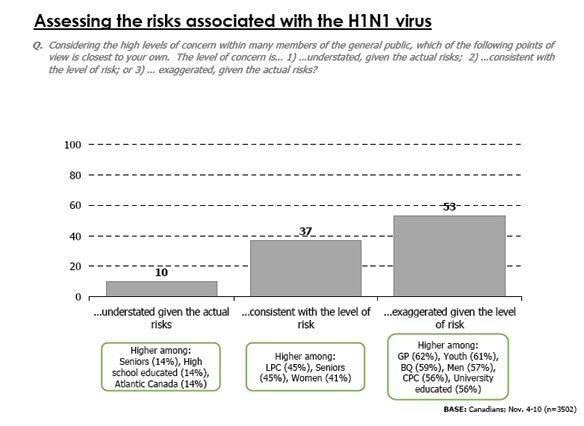‘Contagion’ or How Disaster Movies “Educate” the Masses
By VC | March 8th, 2012
Hollywood movies are usually presented as a form of entertainment, but their plots often conceal a specific agenda. “Disaster movies”, films about the end of the world through various mass crises, are particularly interesting as they all follow the same basic formula and glorify the same entities. In this article, we’ll look at the disaster movie ‘Contagion’ and how it “teaches” its viewers who to trust and who not to trust during a crisis.

Most people watch movies to be entertained. Well, I for one can say that there was absolutely nothing entertaining about Contagion. In fact, the only difference between this movie and state-sponsored educational movies shown in schools is that with Contagion you actually have to pay to be indoctrinated … and to see Matt Damon. During the cold war, students were shown videos instructing them to “Duck and Cover” in case of a nuclear attack. Contagion conditions the masses to expect martial law and to throw themselves at the first available vaccine in case of a crisis.
Featuring Hollywood mega-stars like Matt Damon, Laurence Fishburne, Jude Law and Gwyneth Paltrow,Contagion is a big-ticket Hollywood movie, but also an infomercial promoting specific national and international agencies while encouraging specific behaviors from the public. The plot of the movie appears to follow the big H1N1 scare of 2009 that left many citizens uncertain about the actual risk of the virus. Indeed, after months of terrifying news crowned by a massive vaccination campaign, an important portion of the population concluded that the H1N1 scare was grossly exaggerated and and thought that a vaccine was unnecessary.

This poll taken in November 2009 shows that 53% Canadians believed that the risks associated with the H1N1 virus were exaggerated.
In the wake of this “crisis”, the UN’s World Health Organization (known as the WHO) was harshly criticized and even accused of colluding with Big Pharma to sell vaccines. The U.S. Centers for Disease Control and Prevention (the CDC) also had its credibility tarnished as investigations revealed that the agency misled the public regarding the number of actual cases of H1N1 (for example, see this report from CBS News). As a result, these two agencies needed a good PR stunt to restore their credibility and to scare the hell out of the public. This is where Contagion comes in.
Directed by Steven Soderbergh, Contagion was produced with the active cooperation of the CDC, the WHO and other governmental organizations and its function is clear: To present a hyper-realistic disaster scenario to justify the vaccination campaigns promoted by these agencies while discrediting those who criticize them.
Nothing in the movie hints that it is a work of fiction. Quite to the contrary, everything in Contagion is made to be as realistic as possible, using actual locations and governmental agencies, to make the story as plausible – and as frightening to the masses – as possible. As the slogan of the movie says: “Nothing spreads like fear” and, boy, does it try to spread fear. This movie’s message is: “Nothing was exaggerated, and next time there’s a virus outbreak, listen to us … or you’ll die”.
The Function of Disaster Movies
Disaster movies are often action-packed thrill rides that venture in the sometimes fascinating “what if that happened” side of things. While some are very over-the-top and border on fantasy, others, likeContagion, emphasize realism and actual events. These movies tend to “hit home” with the viewers because they lead them to think “this could happen to me”. Disaster movies exploit the latent fear that recent events caused on the psyche on the masses, tapping into the anxiety and trauma they cause in order to create tension and terror in the viewers. Then, the “agenda” aspect of these movies kick in as they propose to the viewers the best (and only) way these issues can be resolved. Specific groups and agencies are cast as honorable, helpful and trustworthy during the time of crisis, while others are portrayed as hindrances and even traitors. The drama that follows becomes a case of predictive programming, as the steps taken in the movie to resolve the problem will thereafter appear normal to the masses if they ever occur in real life.
In his book Propagandes Silencieuses (Silent Propaganda), the journalist and writer Ignacio Ramonet describes the always present underlying message found in disaster movies:
“In all cases, the disaster causes a kind of ‘state of emergency’ that hands all powers and modes of transportation to state authorities: the police, the army or “the crew”. Portrayed as the ultimate recourse, these institutions are the only ones capable of facing the dangers, the disorder and the decay threatening society thanks to their structure and technical knowledge. (…) As if it was impossible to present to the general public a disaster that is not resolved by state authorities and governmental powers.”
- Ignacio Ramonet, “Propagandes Silencieuses” (free translation)
Along with the all-importance of authorities, the masses are inevitably presented as a herd of idiots prone to panic that must be kept in the dark.
“Another constant found in disaster movies is the infantilization of civilians. The full amplitude of the catastrophe and the danger the masses are facing is often hidden from them. They are kept out of any decision making process, with the exception of managers and technical specialists (engineers, architects, entrepreneurs) who are sometimes called to intervene in the crises, but always through state authorities.The general public is often distracted with pointless entertainment and encouraged to obey without question to a ‘paternal and benevolent’ elite that is doing everything (to the point of self-sacrifice) to protect them.These aspects, along with others, prove that disaster movies, beyond their entertaining value, also present a ‘political response’ to a crisis. Behind a naive mode of fantastic storytelling, a silent message is communicated to the public: the ruler’s profound desire to see entities such as the army, the police or ‘prominent men’ take charge of the restoration and the rebuilding of a society in crisis, even if this means partially sacrificing democracy”.
- Ibid.
Contagion follows Ramonet’s blueprint of disaster movies to a tee. Right from the start, specific organizations are identified as the go-to guys and are automatically given the power to act on a massive scale, namely FEMA, the WHO, the American Red Cross and the CDC.
So what solution does Contagion propose in case of the outbreak of deadly disease? Martial law and mass vaccinations. What will happen if ever an actual disease would break out? Martial law and mass vaccinations. Would the masses questions this type of drastic response to a crisis which might or might not be necessary? No, because hundreds of hours of media content have prepared the masses for this kind of situation. Let’s look at the main components and messages found in Contagion.
Fear Spreads Faster Than Germs
The movie starts by showing how a few sick people, who go about their daily routine, can easily contaminate thousands of people. The point of the introduction is simple: A deadly virus can spread around the world in a matter of days. This realistic yet terrifying scenario is a very effective way to grip the audience and to cause a state of fear. During these scenes, the camera focuses for a few extra seconds on common objects that can transmit germs such as drinking glasses, just long enough for the viewer to realize: “Hey, I sometimes touch these things! That could be me! Aaaah!”

This sick guy could infect the entire bus. To add to the drama and scare factor, they name big cities and their population.

Beware of glasses of water being handed to you...

Not even a mother's hug is safe.
Most of those who are infected with the virus do not live long. In a series of heartbreaking scenes, one of the main characters, Mitch Emhoff (played by Matt Damon), sees his wife and his son lose their lives to the virus. Viewers watching this tragedy play out are led to think “Hey, that’s the most terrible thing could happen to me! AAaaah!”

Watching Beth Emhoff (played by Gwyneth Paltrow) die from the virus is quite disturbing and certainly helps create a climate of fear.
This movie was released only a two years after the outbreak of H1N1 and the media hype that surrounded it, so that fear is still latent in many people. These scenes from Contagion reactivates the “fear virus” that was planted in people … and adds some. After a few minutes of panic-inducing scenes, most viewers will say “Oh my God, someone do something about this virus! This guy lost his wife and child, that’s awful! AAArgh!”. Heroes do step up to the plate and take charge of things … and it just so happens that they were involved in the making of the movie.



No comments:
Post a Comment